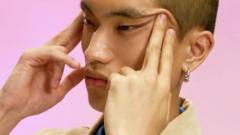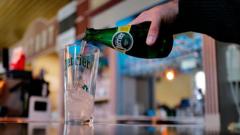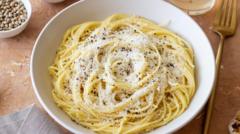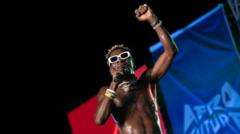**Description**
**Title**
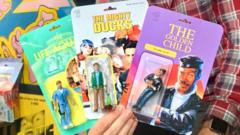
**Title**
Artists Take a Stand Against AI-Generated Dolls: A Fight for Creativity
As AI-generated images of dolls gain popularity, professional artists express concerns over their potential impact on traditional artistry and livelihoods.
**Summary**
The emergence of AI-generated dolls has ignited a significant backlash from artists, who fear the technology undermines their work and creativity. Amid calls for preserving artistic integrity, creatives are advocating for human craftsmanship amidst the AI trend.
The rise of AI-generated dolls has sparked a noticeable shift in the art community, with artists voicing serious concerns regarding the potential implications this technology may have on their livelihoods. Since April, a notable number of individuals have taken to social media to share AI-generated images of themselves transformed into toy figures, raising issues surrounding environmental impact, privacy concerns, and the devaluation of creative work.
Nick Lavellee, the creator behind Wicked Joyful, a business specializing in custom action figures, has expressed worry over the overwhelming influx of AI images crowding social media platforms. Lavellee, who has crafted figures for numerous public figures and sold them for upwards of $250 (£188), fears that public appreciation for his handmade work may diminish in light of AI-generated alternatives. “People are sick of them. It’s an artistic aesthetic — AI-generated art diminishes that,” he stated.
The sentiments echo across the art community leading to the emergence of the #StarterPackNoAI movement, which advocates for human artistry and critiques the uniformity of AI-generated pieces. Artists like Maria Picassó Piquer have joined this movement, emphasizing the unique touch of handmade works compared to the assembly-line feel of AI creations. Picassó Piquer noted, “AI pieces all looked more or less the same, I was amazed at the variety of the ‘human’ works,” underlining the importance of individuality in artistry.
Illustrator Dav le Dessineux from Bordeaux, France, highlighted the competitive threat posed by AI designs, noting that some in his industry have already lost contracts to AI-produced work. His contribution to the #StarterPackNoAI trend illustrated bare essentials: just a pencil and paper, tools that represent the heart of traditional artistry. “We really don’t need more than basic stuff to create something and be original,” he remarked.
In contrast, some artists like Eli Dibitonto emphasized the joy of creating their own starter packs, asserting that the imperfection of human-made art contributes to its charm. Evie Joyce, an illustrator and student, articulated the deeper connection artists have with their creations, highlighting how personal experiences and thoughtful effort go into handmade work, a stark difference from the rapid output of AI systems.
Despite the pushback, some artists, including Lavellee, see potential in AI as a useful tool rather than an outright adversary. “I think all of us have experimented with it,” he acknowledged, suggesting a balanced perspective on the role of AI in the creative process. Industry experts, such as Henk van Ess, argue that the focus on creating AI dolls distracts from the transformative potential of artificial intelligence in tackling pressing global issues.
Lavellee’s optimistic stance reflects a belief that art—particularly that which conveys personal joy and creativity—will prevail: “I really hope people are totally sick of AI action figures, but I hope that they are smart enough to understand the difference in something that I’m doing versus what is computer-generated.” The conversation surrounding AI in the art world continues, as artists strive to assert their unique human touch in an increasingly digital landscape.
**Summary**
The emergence of AI-generated dolls has ignited a significant backlash from artists, who fear the technology undermines their work and creativity. Amid calls for preserving artistic integrity, creatives are advocating for human craftsmanship amidst the AI trend.
The rise of AI-generated dolls has sparked a noticeable shift in the art community, with artists voicing serious concerns regarding the potential implications this technology may have on their livelihoods. Since April, a notable number of individuals have taken to social media to share AI-generated images of themselves transformed into toy figures, raising issues surrounding environmental impact, privacy concerns, and the devaluation of creative work.
Nick Lavellee, the creator behind Wicked Joyful, a business specializing in custom action figures, has expressed worry over the overwhelming influx of AI images crowding social media platforms. Lavellee, who has crafted figures for numerous public figures and sold them for upwards of $250 (£188), fears that public appreciation for his handmade work may diminish in light of AI-generated alternatives. “People are sick of them. It’s an artistic aesthetic — AI-generated art diminishes that,” he stated.
The sentiments echo across the art community leading to the emergence of the #StarterPackNoAI movement, which advocates for human artistry and critiques the uniformity of AI-generated pieces. Artists like Maria Picassó Piquer have joined this movement, emphasizing the unique touch of handmade works compared to the assembly-line feel of AI creations. Picassó Piquer noted, “AI pieces all looked more or less the same, I was amazed at the variety of the ‘human’ works,” underlining the importance of individuality in artistry.
Illustrator Dav le Dessineux from Bordeaux, France, highlighted the competitive threat posed by AI designs, noting that some in his industry have already lost contracts to AI-produced work. His contribution to the #StarterPackNoAI trend illustrated bare essentials: just a pencil and paper, tools that represent the heart of traditional artistry. “We really don’t need more than basic stuff to create something and be original,” he remarked.
In contrast, some artists like Eli Dibitonto emphasized the joy of creating their own starter packs, asserting that the imperfection of human-made art contributes to its charm. Evie Joyce, an illustrator and student, articulated the deeper connection artists have with their creations, highlighting how personal experiences and thoughtful effort go into handmade work, a stark difference from the rapid output of AI systems.
Despite the pushback, some artists, including Lavellee, see potential in AI as a useful tool rather than an outright adversary. “I think all of us have experimented with it,” he acknowledged, suggesting a balanced perspective on the role of AI in the creative process. Industry experts, such as Henk van Ess, argue that the focus on creating AI dolls distracts from the transformative potential of artificial intelligence in tackling pressing global issues.
Lavellee’s optimistic stance reflects a belief that art—particularly that which conveys personal joy and creativity—will prevail: “I really hope people are totally sick of AI action figures, but I hope that they are smart enough to understand the difference in something that I’m doing versus what is computer-generated.” The conversation surrounding AI in the art world continues, as artists strive to assert their unique human touch in an increasingly digital landscape.

